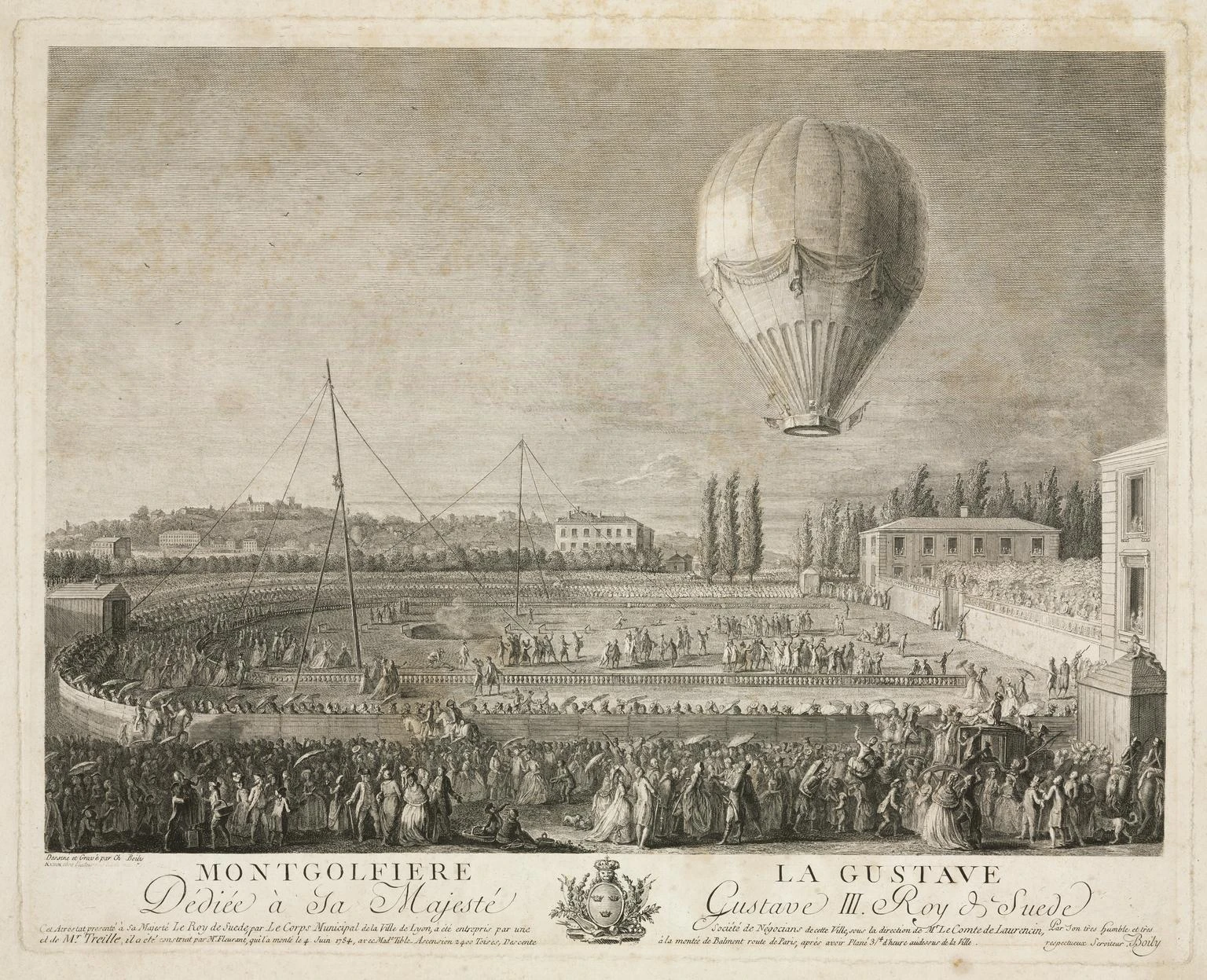A Lyonnaise with an extraordinary destiny
Élisabeth Estrieux, born in Lyon in 1757, married manufacturer Claude Tible at an early age. She worked as a fashion merchant, and some say she also sang, but what's certain is that she didn't love her husband and didn't see him much. She is very close to the Count de Laurencin, a science enthusiast, and her life changes when her town prepares grand festivities in honor of Gustav III of Sweden. For the occasion, a monumental hot-air balloon christened La Gustave is built by the engineer Fleurant and financed by the Comte de Laurencin. Elisabeth agrees to take up residence in it as a passenger, becoming the first woman in history ready to take to the skies.
The historic flight of 1784 in Lyon
On June 4, 1784, in front of an enthusiastic crowd, Élisabeth Tible took off from Lyon. Her flight lasted around three-quarters of an hour, rising to an altitude of 1,500 meters, and crossing the sky over the Saône and then the Rhône. The adventure was perilous: the gondola partially detached, and fire hazards worried spectators. Elisabeth would later claim that she had to hold on to the edge of the gondola because a hole had formed beneath her. Nevertheless, the landing went off without a hitch. This flight marked a decisive moment: for the first time, a woman was not a spectator but an actor in aerial exploration.
The takeoff of the hot-air balloon in which Elisabeth Tible was the first woman in human history to fly through the air/ Photo chosen by Monsieur de France: By Charles Boily - http://collection.sciencemuseum.org.uk/objects/co523168/montgolfiere-la-gustave-print, Domaine public, https://commons.wikimedia.org/w/index.php?curid=67507377
Lack of recognition
After her feat, Élisabeth received a medal from the Royal Academy of Sciences. Her courage proved that women could participate in the development of aeronautics, a field then reserved for men. This boldness places her alongside the great pioneers of aviation from our point of view, but the public of the time doesn't pay much attention. She even suffered from it, finding that people preferred to applaud the actresses of the day rather than her when she appeared in the theater, for example.
A brief life, a lasting memory
Élisabeth moved to Paris to continue her life, but died prematurely in 1785, aged just 27. Despite her short life, she left a lasting mark: her name remains associated with the first heroines in the history of flight. Today, streets, murals and stamps recall her feat, and her memory continues to inspire the history of pioneers of aeronautics.




